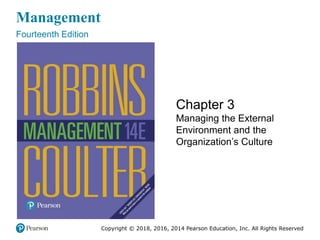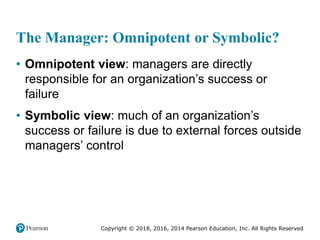The document discusses organizational culture and the external environment. It defines organizational culture as the shared values, principles, and ways of doing things that influence employee behavior and distinguish an organization. Managers are constrained by both the external environment and internal organizational culture. The external environment includes economic, demographic, political, and other factors outside a company's control. A strong organizational culture helps managers achieve goals but also limits flexibility.














































